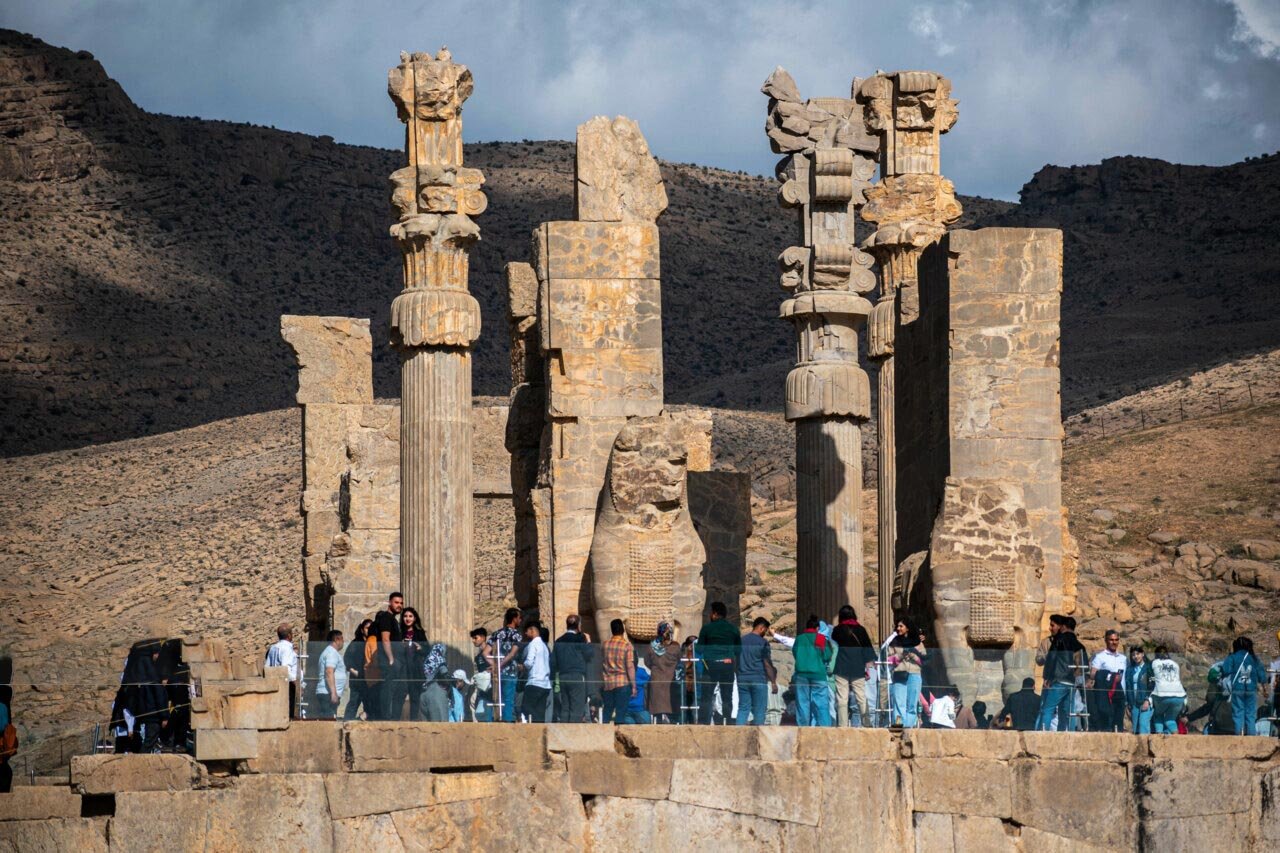Mining operations near Persepolis halted

TEHRAN - Fars province’s Governor-General Mohammad-Hadi Imaniyeh has ordered the suspension of all mining activities near Mount Rahmat, located close to the UNESCO World Heritage site of Persepolis.
Iran, known for its rich history and civilization, is home to numerous cultural and historical landmarks. Fars province, a key cradle of this civilization, has been the seat of various dynasties throughout history. One of its most significant archaeological sites is Persepolis, near which lies Mount Rahmat (also known as Mount Mehr). The northern slopes of this mountain, stretching between Persepolis and the ancient city of Estakhr, are rich in historical relics and ancient graves from the Achaemenid, post-Achaemenid, and Sassanid periods.
Given the historical importance of Mount Rahmat, there has been an ongoing push to have it included on UNESCO’s World Heritage list. However, recent reports of mining activities near this historically significant site have caused widespread concern among cultural heritage enthusiasts. The public has called for an immediate cessation of these activities.
In that regard, Governor-General Imaniyeh, speaking to ISNA on Sunday night, confirmed that no mining or soil extraction will be allowed in the protected zones surrounding Persepolis.
Alireza Askari-Chavardi, the director of the Persepolis World Heritage Site, had previously confirmed the suspension of the mining operations. He explained that the stone quarrying from the mount’s slopes began in 1996, and over the years, multiple complaints had been lodged against it.
Furthermore, the provincial cultural heritage department had issued warnings, and, after interventions by the provincial government, mining activities were suspended in 2016, ISNA quoted Askari-Chavardi as saying on Monday.
However, two weeks ago, operations resumed, prompting renewed legal action, resulting in a fresh order to halt the mining.
Later on September 29, local media in Marvdasht reported that the county’s prosecutor had issued an order to stop the mining activities at Mount Rahmat.
In this regard, Fars province’s tourism director, Mohammad Sabet-Eqlidi, praised the Marvdasht prosecutor for issuing the halt order. He emphasized that all permits related to the quarry would be thoroughly reviewed due to the cultural sensitivities and strict regulations in place to protect heritage sites.
Sabet-Eqlidi further explained that Mount Rahmat is part of the protected zone of the Persepolis World Heritage site, which has three designated protection zones.

Also known as Takht-e Jamshid, Persepolis ranks among the archaeological sites, that have no equivalent, considering its unique architecture, urban planning, construction technology, and art. Majestic approaches, monumental stairways, throne and reception rooms, and dependencies have made that 13-ha ensemble one of the world’s greatest archaeological sites.
Construction of its immense terrace was begun about 518 BC by Darius the Great, the Achaemenid Empire’s king. On this terrace, successive kings erected a series of architecturally stunning palatial buildings, among them the massive Apadana palace and the Throne Hall (“Hundred-Column Hall”). The terrace is a grandiose architectural creation, with its double flight of access stairs, walls covered by sculpted friezes at various levels, monumental gateways, gigantic sculpted winged bulls, and remains of large halls.
By carefully engineering lighter roofs and using wooden lintels, the Achaemenid architects were able to use a minimal number of astonishingly slender columns to support open-area roofs. Columns were topped with elaborate capitals; typical was the double-bull capital where, resting on double volutes, the forequarters of two kneeling bulls, placed back-to-back, extended their coupled necks and their twin heads directly under the intersections of the beams of the ceiling.
Available evidence suggests that Persepolis was burnt by Alexander the Great in 330 BC apparently as revenge against the Persians, because it seems the Persian King Xerxes had burnt the Greek City of Athens around 150 years earlier.
AM
Leave a Comment